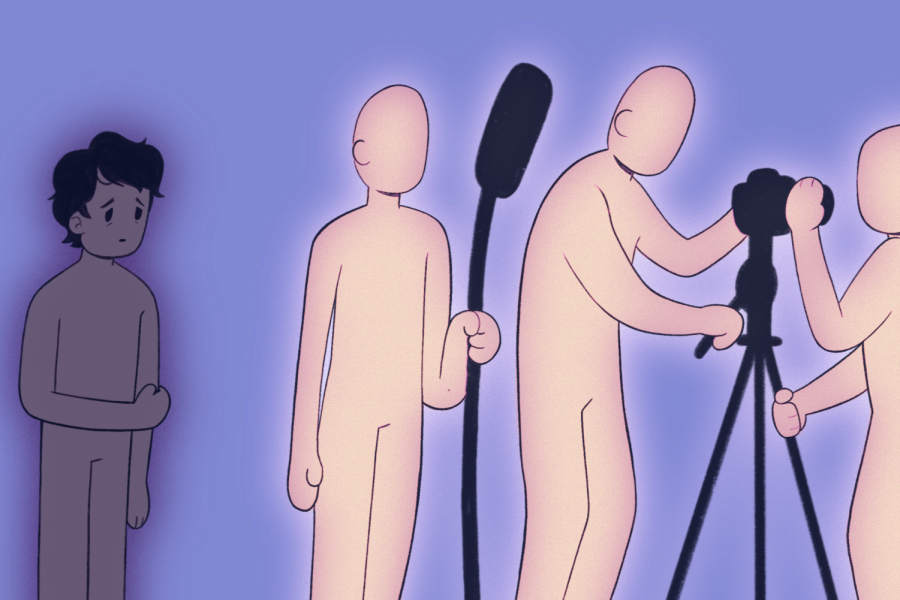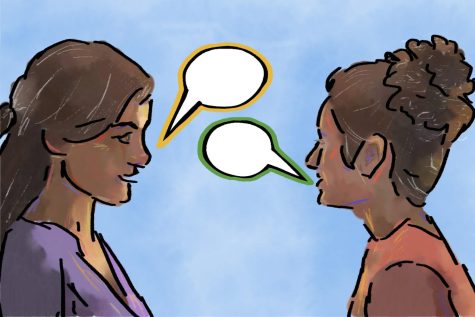UT’s RTF coursework plan needs revision
March 28, 2023
Hailed as having one of the top Radio-Television-Film (RTF) programs nationwide, UT attracts many aspiring filmmakers from around the world. However, many students in Moody’s RTF program have shared similar sentiments over its shortcomings.
“I see all my friends at UCLA or NYU, and their intro classes are like riding on a dolly, (and) they’re actually doing things with a camera, hands-on, learning Avid (an editing software) from the get-go,” RTF and public relations junior Jackie Milstein said.
There’s an unspoken understanding that lower division courses in RTF are designed for students to trudge through before they can learn to make films.
Incoming RTF students must take a semester’s worth of classes concerning subjects like film theory, history and genre analysis. Students attend these courses without touching a camera or being taught any comprehensive post-production software skills often sought after by employers and production companies.
For double majors and internal RTF transfers, this problem is augmented due to prerequisite credit hour requirements. It could easily be the second semester of their junior year before they’re able to take an introductory production class.
RTF junior Tessa Kenworthy notes that there is unanimous disdain amongst RTF students regarding the structure of the introductory media studies coursework.
“Not the content of it, but just how long it takes to get started,” Kenworthy said. “I do think there are certain (media studies) classes where students can be making short films and still learn these lessons.”
Although it’s likely infeasible for the University to provide film equipment for all lower division students, this shouldn’t be the limiting factor. Projects can be completed using student-owned digital cameras or phones. In instances where a student lacks such resources, they can submit a form requesting to use university equipment through Moody Checkout. This system would ease strains on UT’s film equipment resources.
“I think in terms of gaining tangible skills with equipment, we could definitely start earlier,” RTF and political communication studies junior Mason Simpson said. “Even if it’s an equipment concern, like ‘we can’t give freshmen expensive cameras’ – at least editing and post-production skills should be taught.”
While theory-heavy classes like RTF307 (Media and Society) and RTF317 (Narrative Strategies and Media Design) are important, providing in-class opportunities for students to gain practical production experience can help inspire and motivate them.
RTF318 (Intro to Image and Sound) accomplishes this nicely because students are placed in a more intimate lab-group setting where they can contribute to each other’s creative processes. This interaction enables students to learn collaboratively, share their strengths and weaknesses and develop better understandings of different filmmaking roles. Students could also build relationships and new networks.
As of this fall, first steps are being taken by administration committees to revitalize the RTF curriculum for the upcoming 2024-2025 course catalog.
“I know a big want from students is ‘how am I gonna make stuff?’ And so we’re actually revamping things so that you can take RTF318 sooner,” said Cindy McCreery, associate chair and area head for Media Production and Screenwriting in the RTF Department. “We’re putting together a survey for all the students, undergrads and grads. We’re hoping it’ll go out very soon, in the next month. We want to get students’ feedback.”
Many students come to UT with a passion for filmmaking and idealistic notions of film school, but being forced to wait several semesters before experiencing hands-on courses can be disheartening.
Allowing RTF students to create films earlier by implementing a more collaborative, project-based curriculum could help keep their passion alive and engaged in the program.
Martin is an Advertising and Radio-Television-Film junior from Rockwall, TX.







